
All categories
Featured selections
Trade Assurance
Buyer Central
Help Center
Get the app
Become a supplier

(5405 products available)









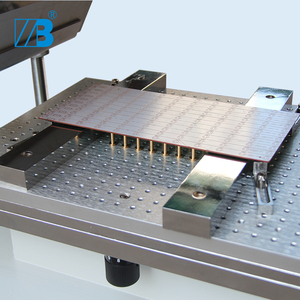
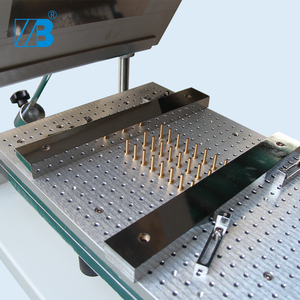









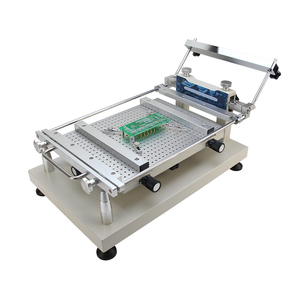

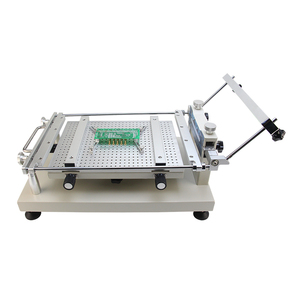

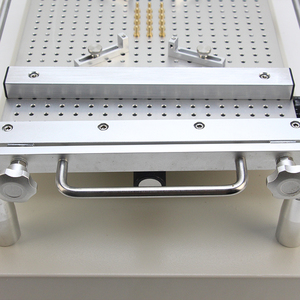









Solder mask for pcbs comes in diverse types. They include:
Liquid Photoimageable (LPI) Solder Masks
LPI solder masks are gaining prominence due to their flexibility and narrowly focused thickness distribution. They can be applied in fluid form and subsequently hardened through ultraviolet exposure. This characteristic enables the formation of highly precise patterns. This flexibility renders LPI suitable for boards with dense components and complicated circuits. Its advantages entail excellent protection against solder bridging and foolproof step coverage. These traits make it favored in high-density applications.
Epoxy-based Solder Masks
Typically, these solder masks are established on epoxy resins. They are distinguished for their unmatched thermal resilience and robust chemical retardance capability. Normally, they are ideal for PCB applications in regions of elevated heat and possible chemical exposure. Such areas might include automotive and aerospace systems. Although epoxy-based masks are not as widely applied as a photoimaging mask, their exceptional durability attributes make them indispensable for specific uses.
Thermal Cure Solder Mask
Conventionally, thermal-cure solder masks are developed to cure under high temperatures. Usually, this solder mask is associated with lead-free soldering techniques. Also, it provides indispensable insulation amidst soldering operations. They are primarily utilized in industries with overwhelming lead-free solder mandates. These industries include communication systems and advanced electronics.
Prefabricated Laminated Solder Masks
These solder masks are made of flexible laminate materials. They offer uncomplicated and fast installation. They are commonly used in situations where conventional solder masks may be difficult to reach. Often, these masks are fixed to the back sides of components on multilayer PCBs. Their ease of installation compensates for a reduction in adhesion with the PCB. Nonetheless, they serve a critical function as a transient solution in circuit board fabrication.
Ink-based Solder Masks
This type of solder mask is particularly prominent among conventional PCB manufacturing processes. Often, screen printing or using a brush applies ink-based solder masks. They are delineated to safeguard copper traces from corrosion and avert solder from covering unwanted areas during assembly. Normally, the diverse kinds of inks utilized include epoxy, polyurethane, and silkscreen. Usually, each has unique properties that offer distinct levels of insulation and protection against chemicals and heat.
A PCB solder mask design is influential in determining the effectiveness and resilience thereof. A typical design process includes choosing the appropriate material, setting the thickness and pattern, and deciding on the curing method.
Material Selection
Usually, the resistance and flexibility in the applied solder mask material typical decide the overall sturdiness of the PCB. Standard materials comprise epoxy, liquid photoimageable, and thermosetting polymers. Usually, each material will be developed with advantages that designate its suitability for assorted applications. For instance, LPI materials will be characterized by unparalleled precision. At the same time, epoxy-based masks excel in thermal and chemical resistances.
Solder Mask Thickness
The thickness of the solder mask has notable effects on the board's performance. In most cases, thicker masks can provide better insulation between the traces. However, they may hinder the adhesion of components. Conversely, thin masks reduce the risk of solder bridging. Nonetheless, they might not offer adequate protection against hazards such as moisture and chemicals. Therefore, balancing thickness is critical to achieving a well-performing PCB.
Pattern Development
Usually, patterns delineate which sections of the PCB will be coated with the solder mask. Conventionally, they are designed using advanced CAD software. Normally, photoresist applications and printing methods create these patterns. Commonly, the design intricacy will depend on the PCB density. Also, this means that high-density boards will more often than not require more complex patterns than their low-density counterparts, given their intricate layout.
Curing Process
Commonly, the curing process is integral to solidifying the solder mask. This is mostly done using UV light, heat, or chemical agents. The method chosen will greatly affect the production time and the product's ultimate properties. For instance, UV-cured masks provide rapid curing times. On the other hand, thermosetting masks cure through heating. This method provides enhanced toughness but may require longer processing times.
Consumer Electronics
Solder masks play a crucial role within the consumer electronics sector. Usually, they protect PCBs in devices such as smartphones, tablets, and gaming consoles. Commonly, using liquid photoimageable solder masks allows for precise applications. Also, this ensures that complex circuits remain insulated from solder bridging. This not only enhances device performance but also boosts reliability in a crowded marketplace.
Industrial Equipment
Standardly, industrial machinery and equipment require PCBs with high durability and reliability. In most cases, epoxy-based solder masks provide stellar thermal insulation. This makes them suitable for PCBs exposed to elevated temperatures and harsh operating conditions. Moreover, they safeguard against corrosion, hence ensuring the longevity and uninterrupted functioning of components in critical industrial settings.
Automotive Systems
Usually, automobiles come with assorted systems that rely on PCBs. These systems include engines, infotainment, and navigation systems. Hence, anticpating high performance. Further, thermal-cure solder masks are particularly valuable in the automotive industry. This is because they endure extreme temperatures and facilitate the securing of lead-free solder.
Aerospace and Defense
Often, these sectors necessitate components that offer unrivaled durability and reliability. Normally, solder masks created from thermosetting polymers come in handy here. These components guarantee stellar performance in challenging conditions. In addition, they safeguard PCBs in avionics, communication systems, and navigation, hence ensuring functionality and reliability. Therefore, it becomes vital for safety and performance.
Medical Devices
Commonly, PCBs are central to medical devices like pacemakers, diagnostic equipment, and monitoring systems. Moreover, solder masks need to ensure reliability and sterility. Also, ink-based solder masks offer exceptional protection against moisture and chemical exposure. Therefore, this makes them ideal for applications in the medical field where failure of components comes with adverse consequences.
Subsequent to the specification and maintenance of the solder mask contributes to performance and durability.
Key Specifications
Commonly, the solder mask comes in diverse parameters. They include; thickness, adhesion, and curing type. In terms of thickness, ideal ranges reside between 10 to 30 micrometers. This allows sufficient insulation without hampering component heat dissipation. Additionally, adhesion ensures the solder mask properly bonds with the PCB surface. Usually, it is crucial as poor adhesion leads to peeling or cracking. Also, curing methods are UV, heat, or chemical. Normally, each method has its advantages. For instance, UV curing offers quick turnarounds. On the other hand, thermal curing provides robust bonds.
Preventative Maintenance
Standardly, preventive maintenance is indispensable for the longevity of solder masks. Usually, it involves routine inspections for signs of wear, such as chipping or discoloration. Typically, this can be attributed to exposure to chemicals or excessive heat. Often, these inspections should be done consistently. Regular cleaning with mild solvents helps in removing any chemical or dust buildup. This helps in preventing deterioration. Moreover, in storage, PCBs should be kept in controlled environments with stable temperatures and humidity. This helps in minimizing the likelihood of mask degradation.
Repair and Replacement
Emergency repairs may be inevitable despite preventive measures. In case of minor damage, solder mask repair kits, including patches and special adhesives, can be used. They come in handy in short-term fixes. On the other hand, replacement of solder masks may be necessary due to severe deterioration. In such scenarios, professionals must strip the old mask and apply a new one. Commonly, this process involves rigorous cleaning and application of fresh solder mask material. Therefore, this is to guarantee a successful reapplication. Standardly, these procedures should be carried out by qualified technicians to maintain PCB integrity.
One considers factors like thermal stability, chemical resistance, and the intricacy of the electrical design. Generally, sectors with high heat exposure prefer epoxy-based solder masks. At the same time, those requiring precise patterns lean toward liquid photoimageable masks. Evaluating the board's operational environment and performance expectations dictates a solder mask's functionality.
In most cases, solder mask thickness comes with pronounced effects on performance. Normally, thicker masks provide superior insulation between the traces. Nevertheless, they may hinder component heat dissipation. On the other hand, thinner masks, although potentially less protective, improve soldering processes by lowering risks such as bridging. Balancing these attributes is key to achieving optimal PCB functions.
Solder masks contribute to environmental sustainability by extending the lifespan of PCBs. Usually, this minimizes the need for frequent replacements. Moreover, some modern masks are developed with eco-friendly materials that reduce harmful emissions during manufacturing. Also, longer PCB life means less electronic waste, which importantly benefits environmental health.
Progressively, there have been advancements on solder mask materials incorporating eco-friendly resins. These are aimed at reducing the ecological impact. Additionally, there are developments in high-temperature resistible masks. Also, there are transparent masks that allow for better inspection without the need to remove them. Moreover, innovations in digital printing technologies for mask application facilitate quicker and more accurate processes.